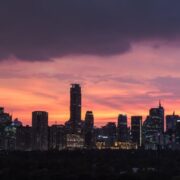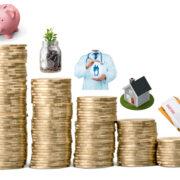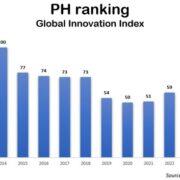Economists expect 2021 will continue to be a challenging year for the Philippines after the country posted a 9.5% contraction in 2020. However, with fiscal spending, economists remain optimistic for a positive economic performance.
Citing the 2020 economic data, HSBC economist Noelan Arbis said the Philippine economy “remains far from recovering” as although sequential data shows improvement, with the fourth quarter gross domestic product (GDP) posting a smaller contraction of -8.3% from the previous quarter’s revised -11.4%, “underlying data suggests that the economy remains sluggish.”
Arbis attributed the still weak private consumption to cautious spending among households due to the pandemic. Yet, he cited the slight uptick in fixed investments on the improvement in the construction sector.
Government spending also rose in the last quarter of 2020 but added that this “was not nearly enough to offset the weakness in the broader economy.”
“Overall, the Philippine economy is on the path to recovery, but it remains far from reaching its pre-pandemic levels,” he said, projecting a 6.5% GDP this year.
Further cuts in the Bangko Sentral ng Pilipinas’ (BSP) key rates this year are not expected amid the slow recovery projection.
To help cushion the economic impact of the pandemic, the BSP cut key rates by 200 basis points in 2020 to a record-low of 2%.
Inflation is projected to surpass the government’s 2-4% target “in the quarters ahead.”
This, after the rate of price increases rose to 3.3%, and then to 3.5% in November and December of last year. The average inflation in 2020 stood at 2.6%.
Arbis said “continued reduction in the policy rate would drive real interest rates further into negative territory and may prompt unwanted inflationary pressures.”
“Additional RRR (reserve requirement ratio) bust may be in store later this year, but will be highly dependent on the demand for funds and the government’s fiscal impulse,” he added.
In 2020, BSP cut banks’ RRR by as much as 200 basis points.
Meanwhile, ANZ Research said movement restrictions remain one of the main factors for the challenging growth outlook this year since this impact on the labor market.
“Fiscal spending this year will have to be effected rigorously,” it said.
The ANZ Research report added that while this year’s PHP4.5-trillion national budget is “expansive in size and scope” “its effective delivery will be of seminal importance.”
Based on the projections of the inter-agency Development Budget Coordinating Committee (DBCC) on December 3, 2020, the expenditure program for this year amounts to around PHP4.6 billion, or about 23.3% of gross domestic product (GDP).
Revenues were projected to be around PHP2.88 trillion, 14.4% of domestic growth, while the budget gap amounts to around PHP1.78 trillion, about 8.9% of the annual output.
ING Bank Manila senior economist Nicholas Mapa forecast the first quarter 2021 growth to remain in negative before posting a substantial 13% rise in the second quarter “mainly on base effects.”
“Household spending, the main growth engine of the economy will likely stay in low gear with the unemployment rate at 8.7% with prospects for a quick turnaround in consumption confounded further by the return of inflation, which is expected to breach BSP’s inflation target as early as April,” he said.
Mapa projects capital formation to have a slight turnaround from last year as banks’ loan growth remains subdued.
“With only a modest pickup in government expenditures expected in 2021 and with the trade balance forecast to remain in deficit, we do not see a stark pickup in economic activity with GDP growth powered mainly by base effects with the economy still lacking substantial momentum to drive growth back to the 6 percent level,” he said.
Rizal Commercial Banking Corporation chief economist Michael Ricafort said economic drivers for this year include higher government spending, especially on infrastructure; additional policy easing from the BSP; passage of the various reform measures such as the Corporate Recovery and Tax Incentives for Enterprises (CREATE) Act and the Financial Institutions Strategic Transfer (FIST) bills; continued re-opening of the economy; and availability of the coronavirus disease (Covid-19) vaccine.
Ricafort said a 6% level growth for the domestic economy this year is “technically possible” even as recovery will turnout slower-than-expected, especially in the National Capital Region.
He added a drop in the number of Covid-19 infections and the roll-out of vaccines are expected to ignite both consumer and business confidence and spending which in turn should improve the outlook for economic recovery.






